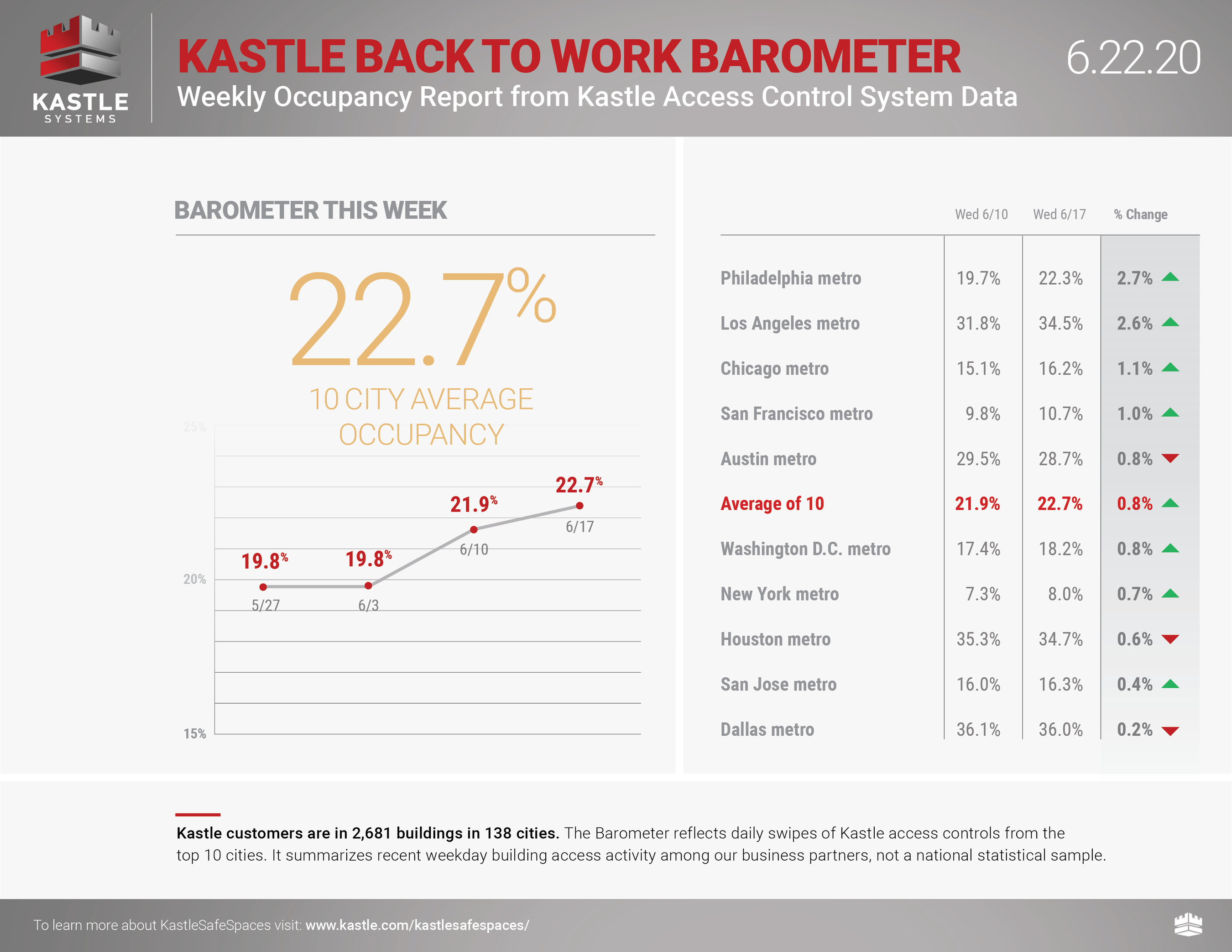Office Occupancy Varies Widely as Workers Trickle Back: Report
The return is gradual and differs dramatically among major metros, according to an analysis of building access data by Kastle Systems International.
Having—for the most part—quickly sheltered in place in March and April, office workers across the U.S. are slowly venturing back to their workplaces, according to a new weekly report from Kastle Systems International.
READ ALSO: What’s Next for the Office Sector?
The Kastle Back to Work Barometer is an average based on millions of aggregated, anonymous daily building access data points from Kastle-secured properties in 10 major metro areas: Austin, Chicago, Dallas, Houston, Los Angeles, New York, Philadelphia, San Francisco, San Jose and Washington.
It stood at 22.7 percent on June 17, having risen steadily, from 19.8 percent on June 3, to 21.9 percent on June 10. The Barometer will be released weekly as cities around the nation continue their phased re-openings. To compile it, Kastle Systems uses keycard, fob and KastlePresence app access data from the 3,600 buildings and 41,000 businesses the company secures across 47 states.
Despite a dip of 0.2 percent, Dallas topped the list of the metros with the highest levels of office occupancy, based on Kastle data, standing at 36 percent. Houston followed, at 34.7 percent, then Austin, at 28.7 percent. On the other side of the spectrum, the lowest levels were seen in New York City (unsurprisingly, at 8.0 percent); San Francisco (10.7 percent); Chicago (16.2 percent); San Jose (16.3 percent); and Washington, D.C. (18.2 percent).
Timeline of a plague
Kastle’s data showed the earliest notable decline in occupancy in San Francisco, in the first week of March. As shelter-in-place orders were instituted in state after state, office occupancy plummeted nationwide.
For example, occupancy in Washington, D.C., office buildings that use Kastle’s system fell from 90 percent on March 11 to 25 percent on March 17, to only 14 percent a few weeks later. Other cities saw similar patterns.
Though occupancy started to pick up in Austin, Houston, Los Angeles and Miami in late May, it then declined briefly as protests spread across the country. Currently, Western and Southwestern cities lead the nation in reopening, as cities from Chicago to Philadelphia follow.
Kastle Systems CEO Haniel Lynn told Commercial Property Executive, “We’re starting to see an uptick in office occupancy as states reopen and we expect that to continue. For American workers to want to return into office buildings, there must be a comprehensive system in place that brings together technology and new safety protocols both for the building and for tenant spaces alike that helps to make them comfortable to go back.”









You must be logged in to post a comment.